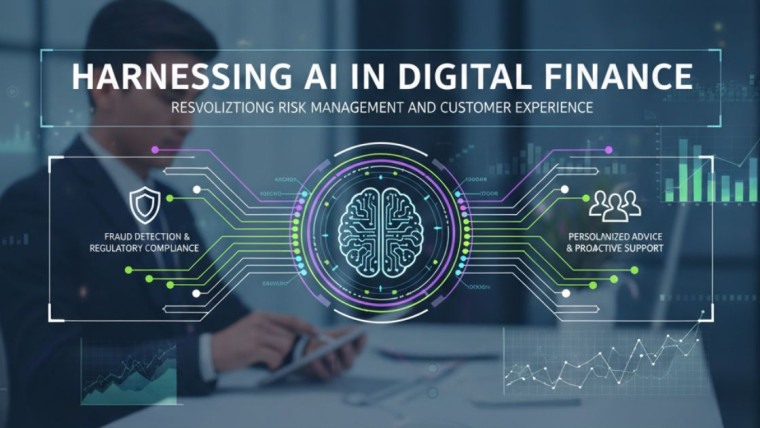In today’s fast-paced financial landscape, AI & Machine Learning in Digital Finance drive a new wave of innovation and transformation. These intelligent technologies are revolutionising how banks, fintech firms, and financial institutions operate — from automating complex processes to delivering personalised customer experiences. By enabling more intelligent decision-making, reducing risks, and boosting operational efficiency, artificial intelligence and machine learning are shaping the future of fintech and redefining digital banking as we know it. This guide delves into their key applications, benefits, challenges, and what lies ahead in this data-driven era of finance.
Driving Forces Behind Adoption
Several factors have accelerated the integration of AI and ML into digital finance. First, the explosion of data generated by digital transactions, social media, and connected devices provides rich training material for advanced algorithms. Second, improvements in computing power and the availability of cloud-based infrastructure have lowered barriers to entry, allowing organizations of all sizes to leverage AI tools. Finally, heightened customer expectations for personalized, real-time services have increased the demand for intelligent financial solutions.
Key Applications of AI and Machine Learning in Digital Finance

Personalized Banking and Customer Engagement
AI-driven chatbots and virtual assistants revolutionize customer service by providing instant support and tailored recommendations. Machine learning models can analyze spending patterns, transaction history, and customer preferences to offer customized financial advice, product suggestions, and proactive alerts. This level of personalization fosters stronger customer relationships and drives loyalty.
Fraud Detection and Risk Management
One of the most critical use cases for AI in finance is fraud detection. ML algorithms can process millions of transactions in real time, accurately identifying anomalies and flagging suspicious activity. These models adapt to evolving fraud techniques by continuously learning from new data, reducing false positives, and improving overall security.
Automated Trading and Portfolio Management
Algorithmic trading systems leverage AI to analyze market data, detect trends, and execute trades at optimal times. Quantitative hedge funds and robo-advisors use machine learning to build predictive models that balance risk and reward according to predefined strategies. This automation boosts trading efficiency and democratizes access to sophisticated investment tools.
Credit Scoring and Lending
Traditional credit scoring often relies on limited data sources, which can exclude underserved populations. AI-based credit models can incorporate alternative data—such as mobile phone usage, utility payments, and social behavior—to comprehensively assess creditworthiness. This inclusive approach expands access to credit while maintaining rigorous risk management.
Technical Foundations: Machine Learning Models and Data Infrastructure
Implementing AI in finance requires robust data pipelines and specialized ML models. Supervised learning techniques like regression and classification are common for credit scoring and fraud detection. Unsupervised learning, including clustering and anomaly detection, helps identify patterns without labeled data. Reinforcement learning continues to gain traction in dynamic environments like trading. Meanwhile, data infrastructure relies on scalable storage, data lakes, and real-time processing frameworks to feed algorithms with high-quality inputs.
Challenges and Considerations
Despite AI’s benefits, financial institutions face significant challenges when adopting these technologies. Data privacy regulations, such as GDPR and CCPA, impose strict data collection and processing requirements. Ensuring the transparency and explainability of AI models is crucial for regulatory compliance and customer trust. Additionally, integrating AI systems with legacy infrastructure can be complex and resource-intensive. Organizations must invest in talent, change management, and continuous model monitoring to achieve sustainable AI initiatives.
Regulatory and Ethical Implications
As AI-driven decisions impact customer lives, ethical considerations come to the forefront. Fairness and bias mitigation are essential to prevent discriminatory outcomes in lending or insurance. Regulators worldwide are developing frameworks to promote responsible AI, emphasizing accountability, auditability, and human oversight. Financial institutions must stay informed about evolving standards and collaborate with policymakers to foster safe innovation.
Future Trends and Opportunities

The future of digital finance is intertwined with advancements in AI. Explainable AI (XAI) will address transparency concerns, enabling stakeholders to understand model logic. Federated learning promises to enhance privacy by training models across decentralized data sources without centralizing sensitive information. Additionally, quantum computing could revolutionize optimization problems in asset allocation and risk analysis. AI will unlock new products and services as these technologies mature, from predictive insurance pricing to automated compliance management.
Learn More: Top 10 Fintech Trends To Look Out
Conclusion
AI and machine learning drive a paradigm shift in digital finance, offering unprecedented personalization, security, and efficiency capabilities. While challenges around data privacy, model transparency, and integration remain, the potential rewards are immense. Financial institutions that embrace AI strategically and ethically will be well-positioned to lead in the competitive digital economy.








What Is FinTech? A Beginner’s Guide to the Finteching 2025
Finance in the Metaverse: Will Virtual Economies Reshape Real-World Credit Scores?
AI in Wealth Management: How Artificial Intelligence is Reshaping Finance
AI-Powered Credit Scoring: Revolutionizing Digital Lending in the Digital Finance Era
Embedded Finance: How Seamless Financial Services Are Integrating into Everyday Apps
AI-Powered Credit Scoring: Revolutionizing Digital Lending in the Digital Finance Era
Harnessing AI in Digital Finance: Revolutionizing Risk Management and Customer Experience
How Open Banking APIs Are Revolutionizing Digital Finance?